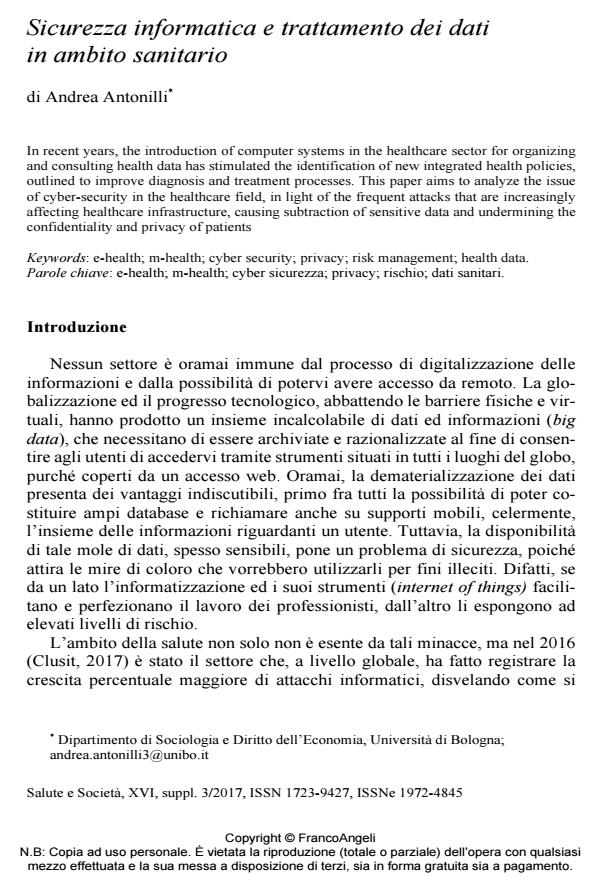Sicurezza informatica e trattamento dei dati in ambito sanitario
Titolo Rivista SALUTE E SOCIETÀ
Autori/Curatori Andrea Antonilli
Anno di pubblicazione 2017 Fascicolo 2017/3-Suppl.
Lingua Italiano Numero pagine 17 P. 84-100 Dimensione file 105 KB
DOI 10.3280/SES2017-SU3006
Il DOI è il codice a barre della proprietà intellettuale: per saperne di più
clicca qui
Qui sotto puoi vedere in anteprima la prima pagina di questo articolo.
Se questo articolo ti interessa, lo puoi acquistare (e scaricare in formato pdf) seguendo le facili indicazioni per acquistare il download credit. Acquista Download Credits per scaricare questo Articolo in formato PDF

FrancoAngeli è membro della Publishers International Linking Association, Inc (PILA)associazione indipendente e non profit per facilitare (attraverso i servizi tecnologici implementati da CrossRef.org) l’accesso degli studiosi ai contenuti digitali nelle pubblicazioni professionali e scientifiche
In recent years, the introduction of computer systems in the healthcare sector for organizing and consulting health data has stimulated the identification of new integrated health policies, outlined to improve diagnosis and treatment processes. This paper aims to analyze the issue of cyber-security in the healthcare field, in light of the frequent attacks that are increasingly affecting healthcare infrastructure, causing subtraction of sensitive data and undermining the confidentiality and privacy of patients
Parole chiave:E-health; m-health; cyber sicurezza; privacy; rischio; dati sanitari.
Andrea Antonilli, Sicurezza informatica e trattamento dei dati in ambito sanitario in "SALUTE E SOCIETÀ" 3-Suppl./2017, pp 84-100, DOI: 10.3280/SES2017-SU3006